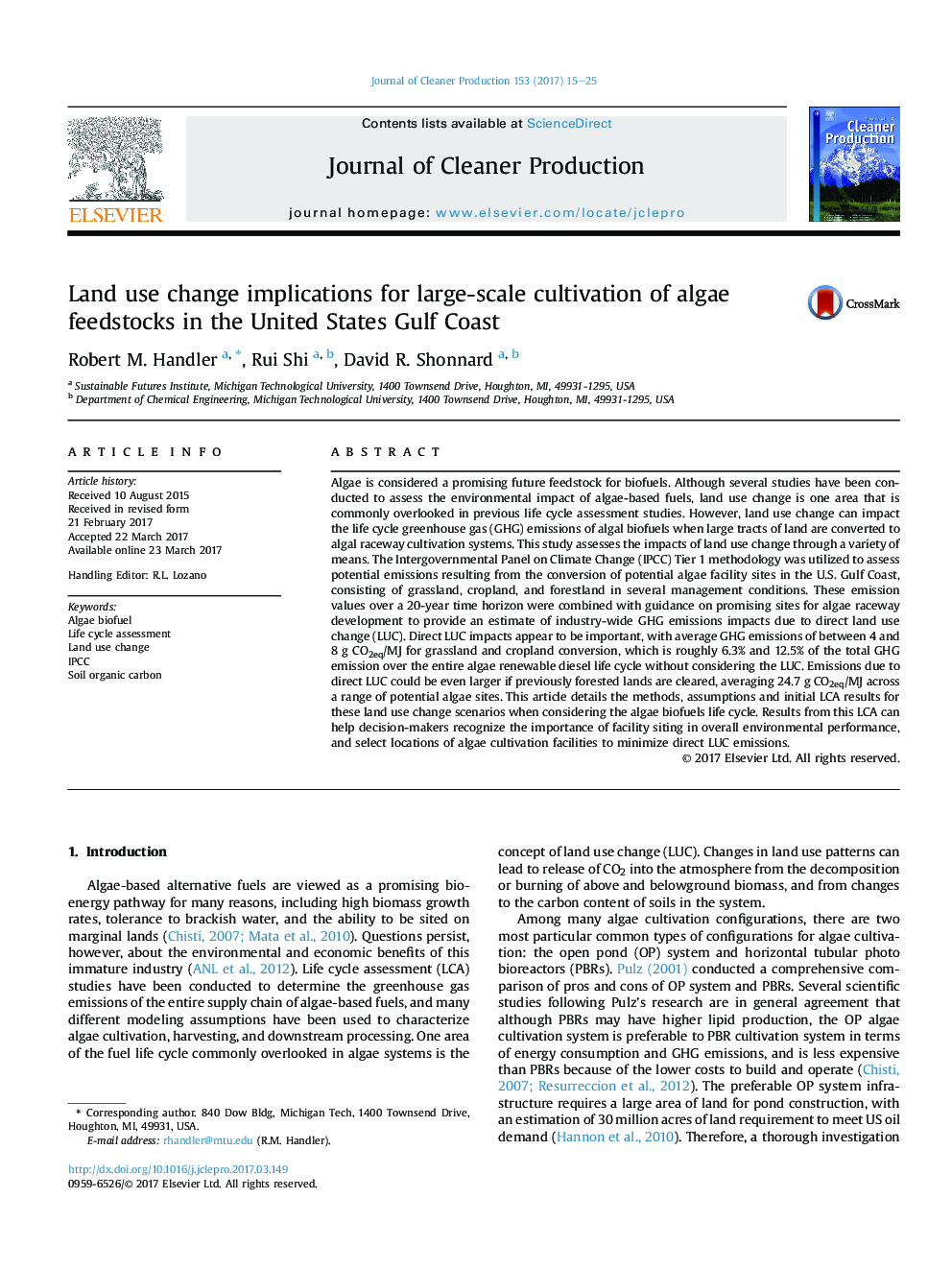| کد مقاله | کد نشریه | سال انتشار | مقاله انگلیسی | نسخه تمام متن |
|---|---|---|---|---|
| 5479617 | 1522100 | 2017 | 11 صفحه PDF | دانلود رایگان |
عنوان انگلیسی مقاله ISI
Land use change implications for large-scale cultivation of algae feedstocks in the United States Gulf Coast
ترجمه فارسی عنوان
پیامدهای تغییر کاربری زمین برای کشت مقیاس بزرگ مواد غذایی جلبک در ساحل خلیج فارس
دانلود مقاله + سفارش ترجمه
دانلود مقاله ISI انگلیسی
رایگان برای ایرانیان
کلمات کلیدی
موضوعات مرتبط
مهندسی و علوم پایه
مهندسی انرژی
انرژی های تجدید پذیر، توسعه پایدار و محیط زیست
چکیده انگلیسی
Algae is considered a promising future feedstock for biofuels. Although several studies have been conducted to assess the environmental impact of algae-based fuels, land use change is one area that is commonly overlooked in previous life cycle assessment studies. However, land use change can impact the life cycle greenhouse gas (GHG) emissions of algal biofuels when large tracts of land are converted to algal raceway cultivation systems. This study assesses the impacts of land use change through a variety of means. The Intergovernmental Panel on Climate Change (IPCC) Tier 1 methodology was utilized to assess potential emissions resulting from the conversion of potential algae facility sites in the U.S. Gulf Coast, consisting of grassland, cropland, and forestland in several management conditions. These emission values over a 20-year time horizon were combined with guidance on promising sites for algae raceway development to provide an estimate of industry-wide GHG emissions impacts due to direct land use change (LUC). Direct LUC impacts appear to be important, with average GHG emissions of between 4 and 8Â g CO2eq/MJ for grassland and cropland conversion, which is roughly 6.3% and 12.5% of the total GHG emission over the entire algae renewable diesel life cycle without considering the LUC. Emissions due to direct LUC could be even larger if previously forested lands are cleared, averaging 24.7Â g CO2eq/MJ across a range of potential algae sites. This article details the methods, assumptions and initial LCA results for these land use change scenarios when considering the algae biofuels life cycle. Results from this LCA can help decision-makers recognize the importance of facility siting in overall environmental performance, and select locations of algae cultivation facilities to minimize direct LUC emissions.
ناشر
Database: Elsevier - ScienceDirect (ساینس دایرکت)
Journal: Journal of Cleaner Production - Volume 153, 1 June 2017, Pages 15-25
Journal: Journal of Cleaner Production - Volume 153, 1 June 2017, Pages 15-25
نویسندگان
Robert M. Handler, Rui Shi, David R. Shonnard,
